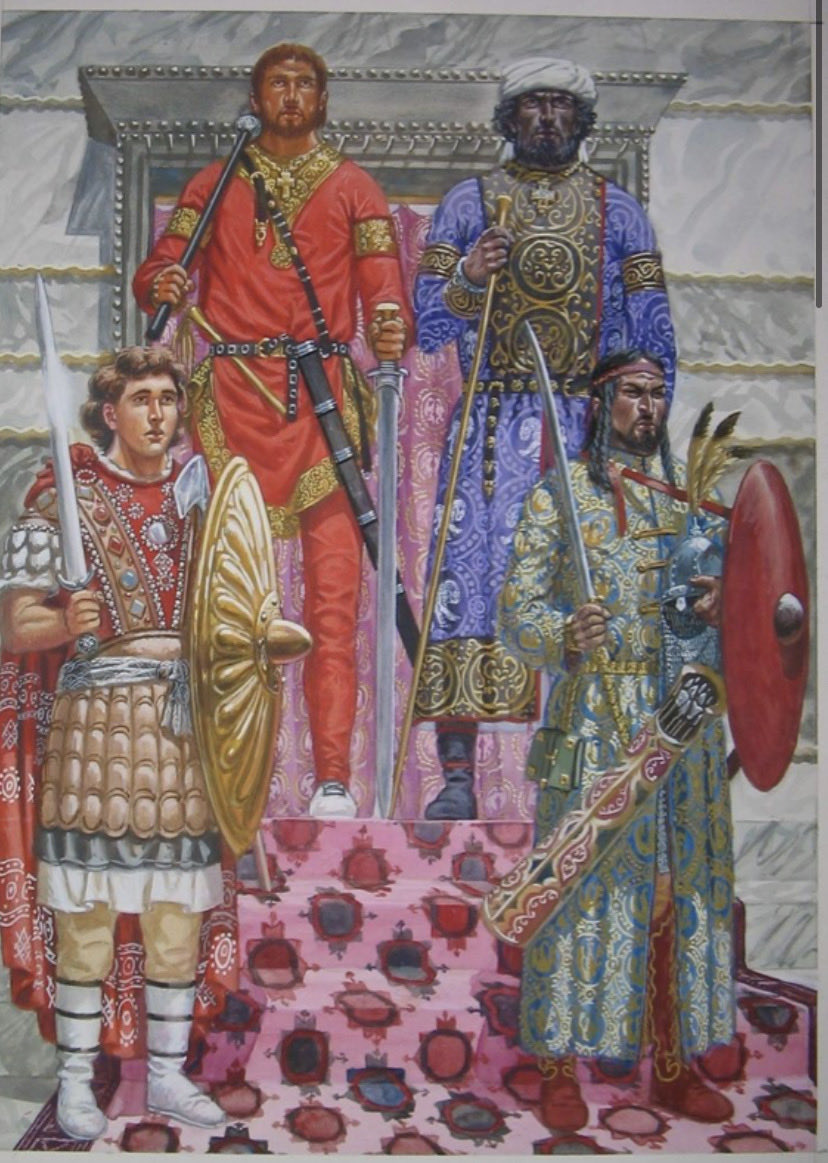The Ancient World was full of intrepid explorers & harrowing journeys.
From the ice-choked Arctic to lava-spewing volcanoes above damp jungles; one journey trumps them all.
A thread on ancient explorers & a journey so unbelievable 2,000 years would pass before it was repeated.
From the ice-choked Arctic to lava-spewing volcanoes above damp jungles; one journey trumps them all.
A thread on ancient explorers & a journey so unbelievable 2,000 years would pass before it was repeated.
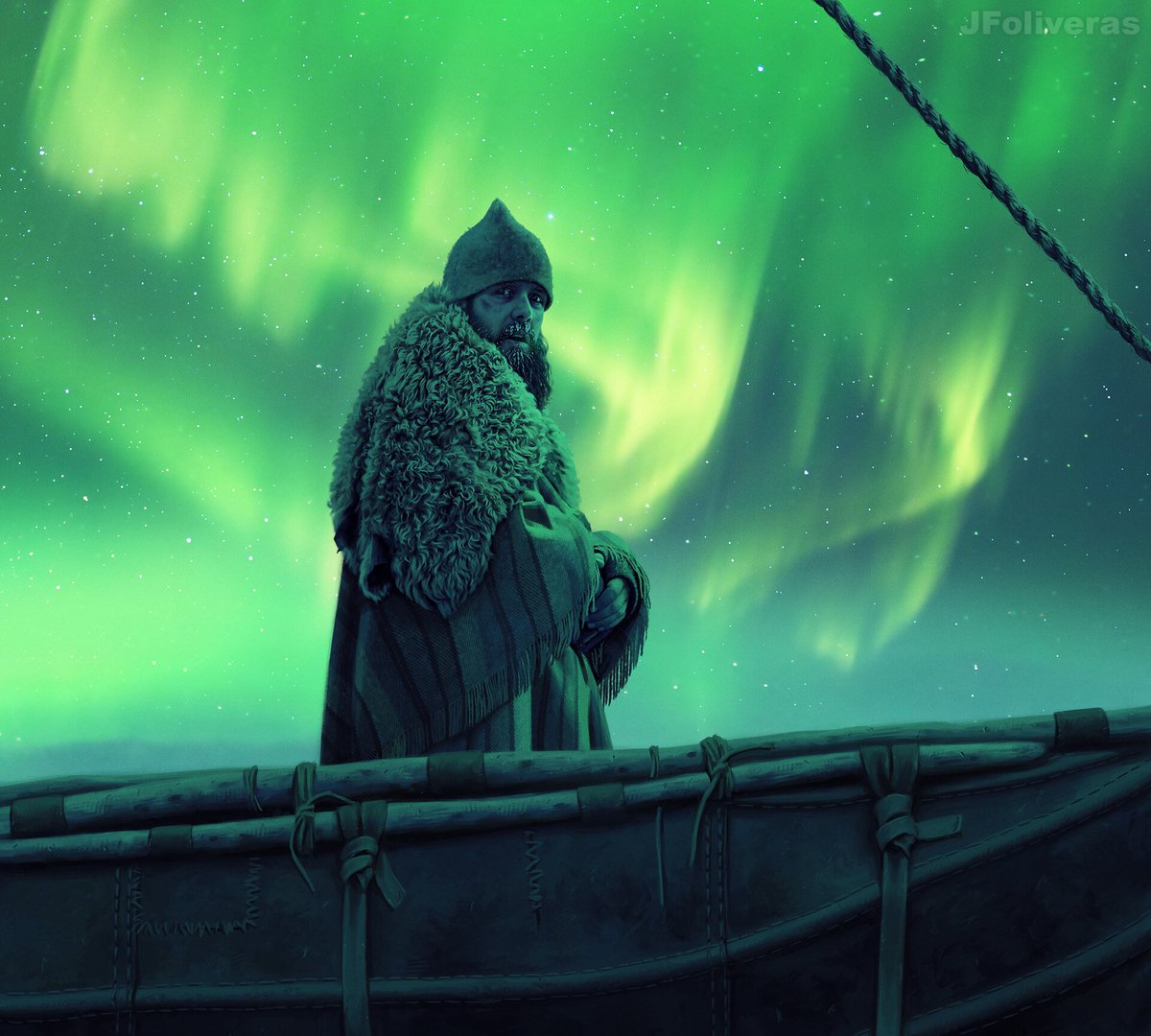
The Classical Age was one of economic, demographic, cultural, and scientific expansion. After the Bronze Age Collapse, the recovering civilizations of the Eastern Mediterranean looked across the wine-dark seas for land, resources, and trade. 
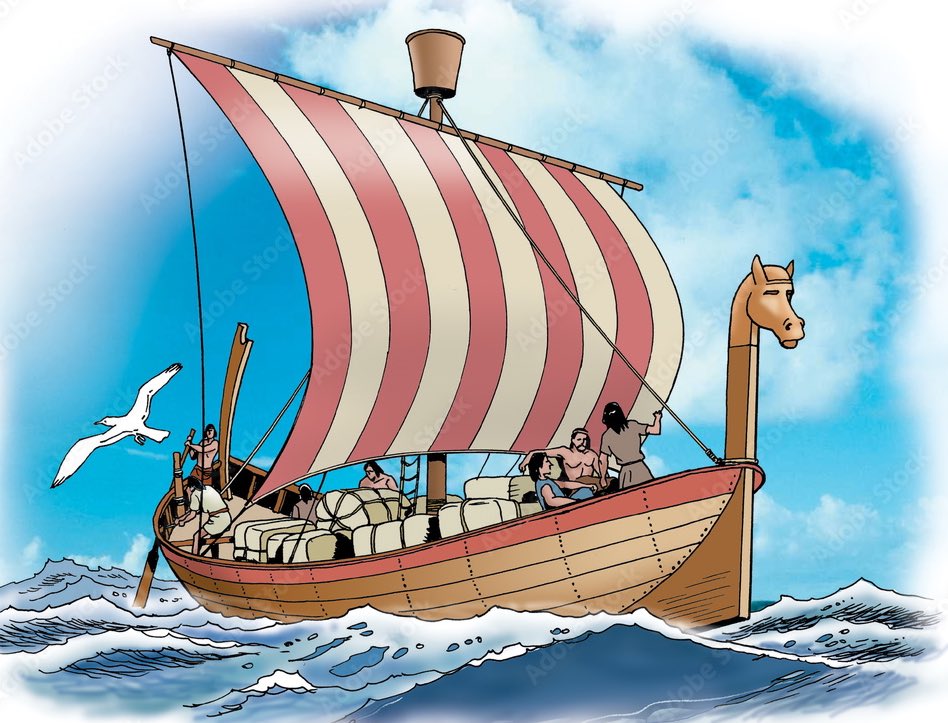
Two of the primary zones for this expansion were the Western Mediterranean & the Black Sea. Trade, colonies, and cultural exchange brought these regions firmly into an expanding global network. 
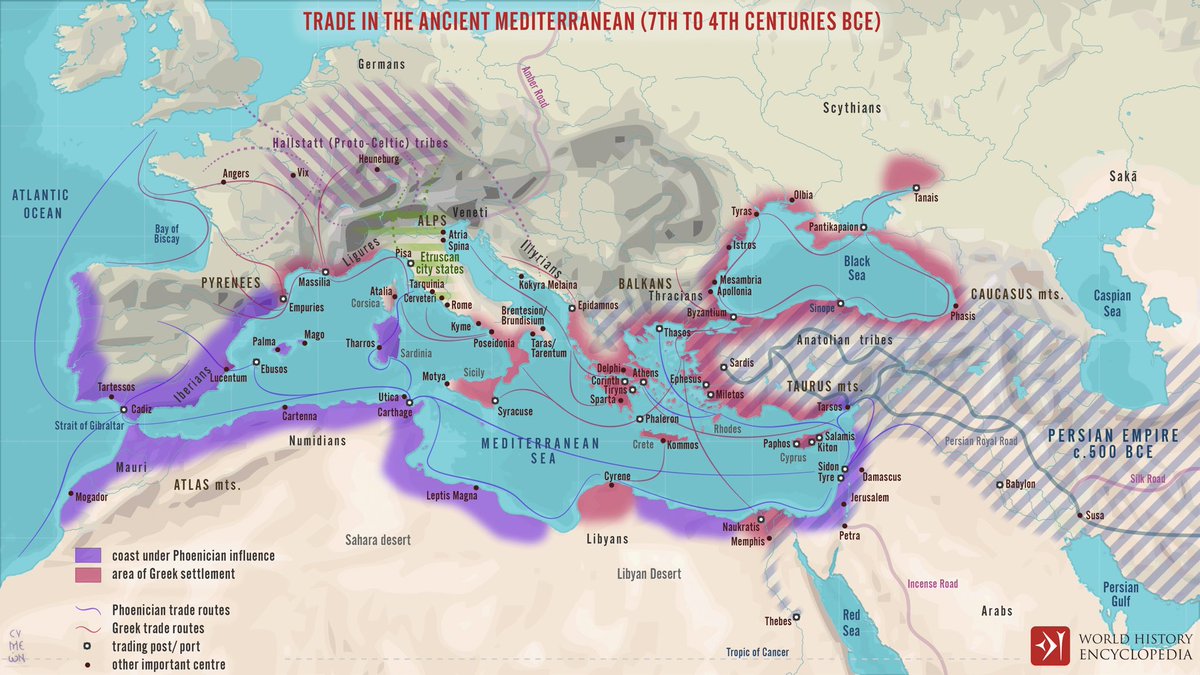
Ancient memories & myths of the earliest expeditions to these regions may be found in tales like the Odyssey & Argonautica (Jason & the Golden Fleece). However, by the 6th c. BC, most of these regions had been well-integrated, new regions & trade routes needed to be discovered. 
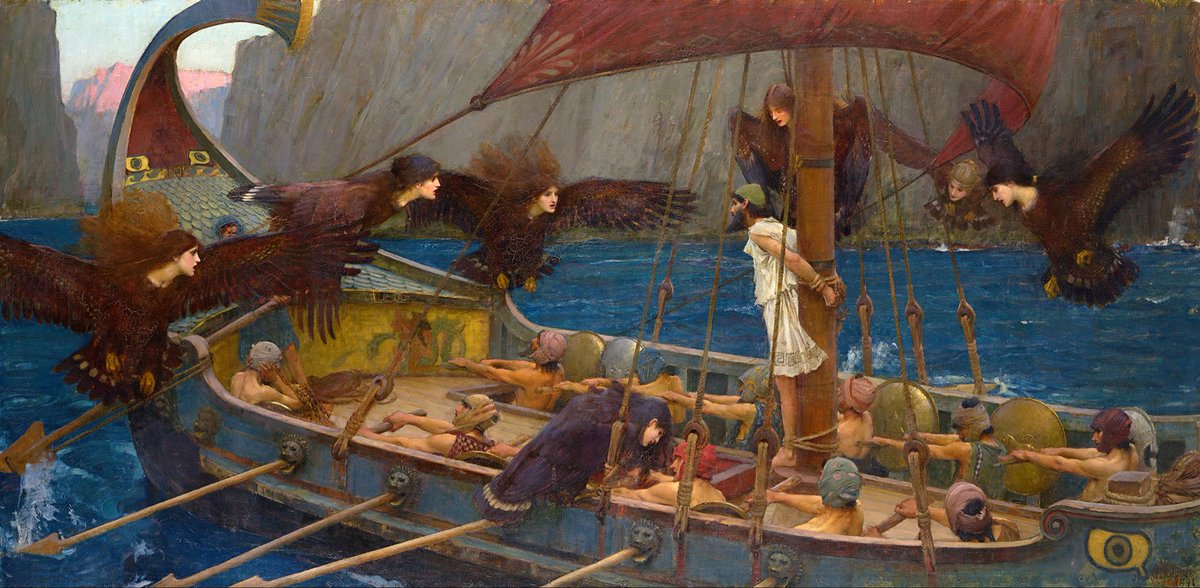
The two great seafaring & colonizing cultures of the Mediterranean were the Phoenicians & Greeks. These two engaged in an epic rivalry over trade, land, & military supremacy. The leading edge of this race to bring more land into their control was expeditions into the unknown. 
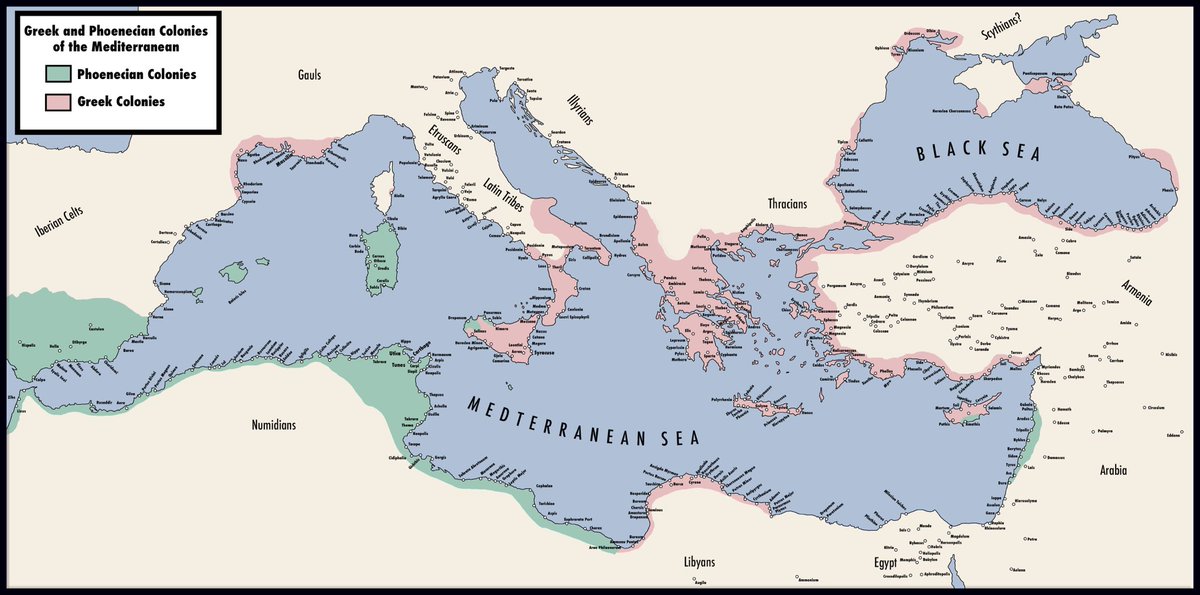
The Phoenicians established colonies at the Pillars of Hercules, the western outlet of the Mediterranean, allowing them to control trade up & down the Atlantic coasts of Europe & Africa. One of the most prized resources was the tin found in the British Isles, especially Cornwall. 
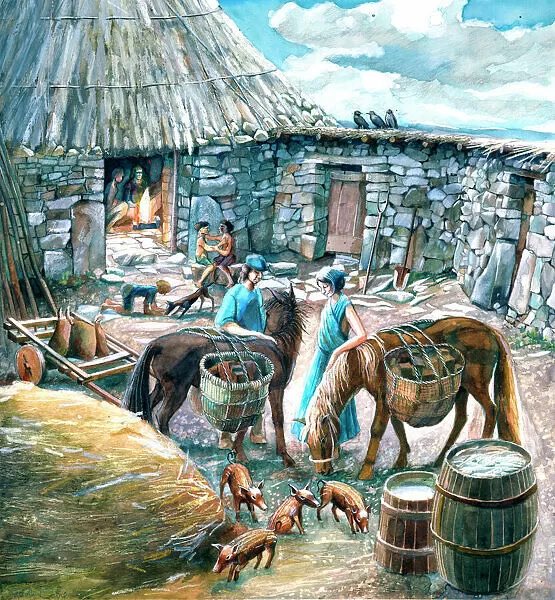
Phoenicians traders made their way here trading coins for tin & other goods, possibly setting up a trading post on the island of Thanet (Tanit, a Punic goddess) in Kent. However, Pytheas, a Greek from Massalia managed to run the blockade & sail up to the almost mythic Britain. 

Pytheas witnessed the tin trade in Britain & claimed the Briton’s took their tin to the island of Ictis where foreign merchants purchased it & transported it to Gaul & beyond. Pytheas remarked the locals were friendly thanks to frequent contact with these merchants. 
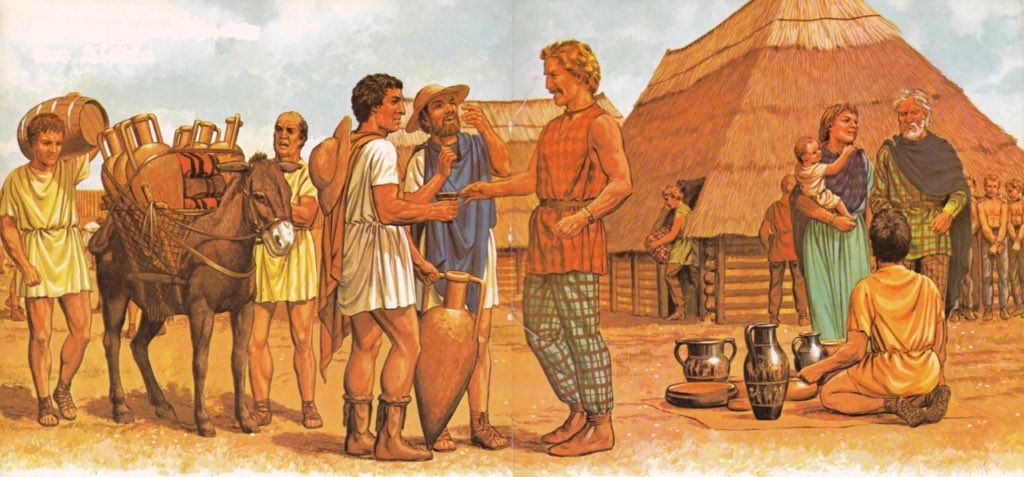
Its alleged Pytheas circumnavigated Britain & claimed the northeastern point was named Orcas by the native Britons, modern Orkney. Pytheas also remarked that the natives fought on chariots which he compared to the Greeks of the Trojan War. 
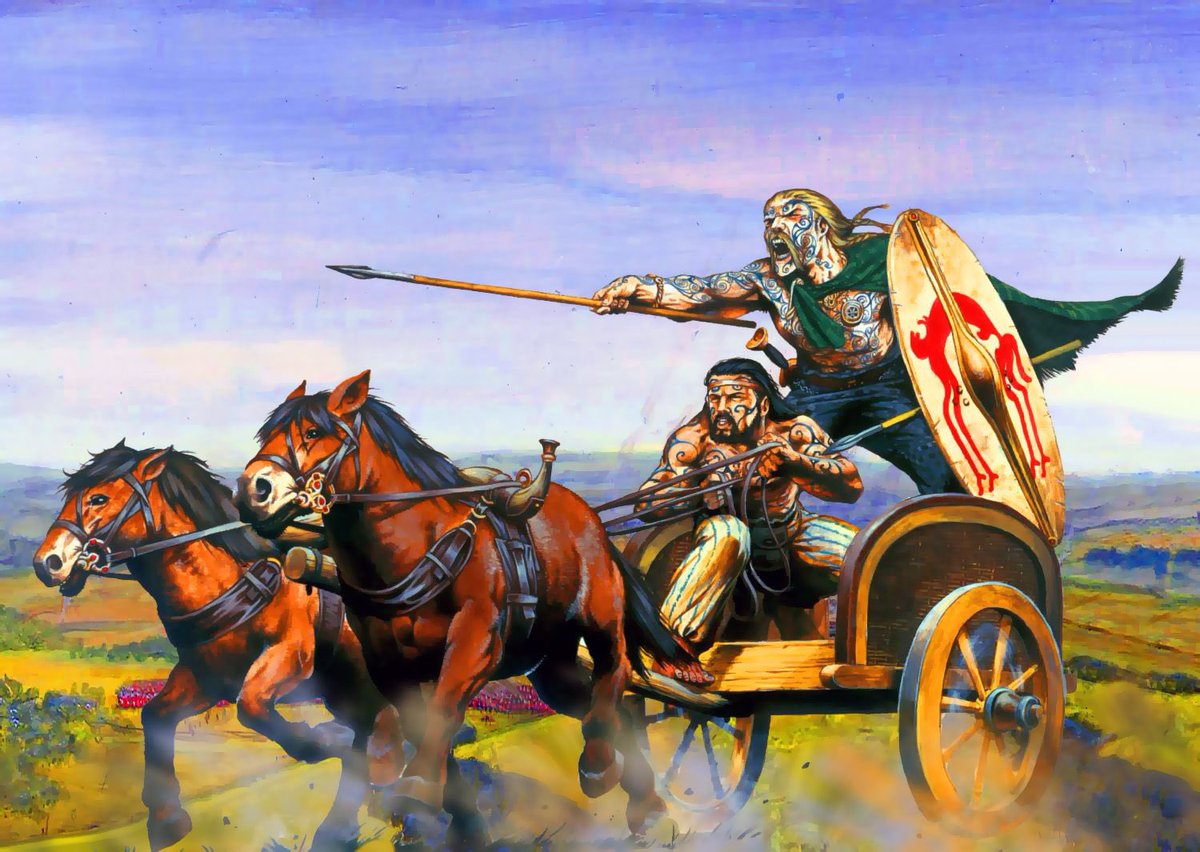
Pytheas sailed to Thule, modern Norway, where he described mead, the midnight Sun, & massive fields of drift ice which prevented his exploration further north. This ocean of fog, ice, & slush under the constant, weak light of the Arctic Sun marked the world’s edge for Pytheas. 
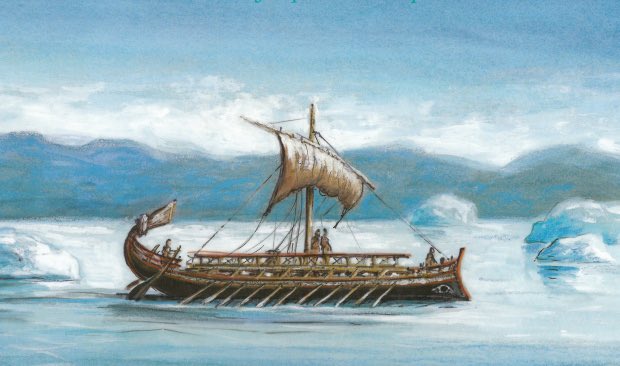
Pytheas then turned East into the Baltic. Pytheas stopped at the mouth of Vistula River in modern Poland & met the Goths who had migrated from Scandinavia. He wrote on the plentiful amber found there & turned back, unable to safely travel through Scythian lands. 
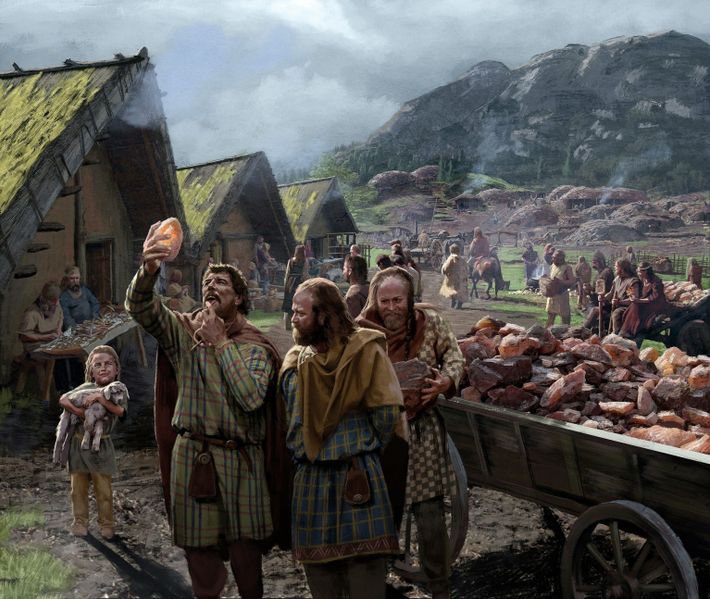
Pytheas’s expedition enlightened the Greeks of the frozen reaches of the North Atlantic & the regions which tin & amber came from, not only gaining valuable knowledge of opaque trade routes, but sparking the imagination regarding these icy, mist-clung lands dredged from myth. 
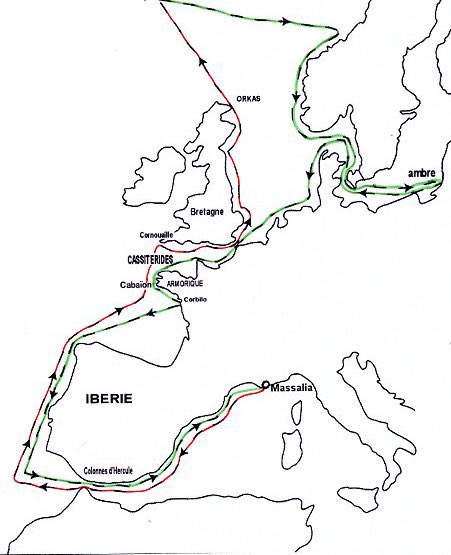
The Greeks were not the only intrepid explorers of these far-flung lands. The great city of Carthage, Queen of the Western Mediterranean & jewel of Africa, launched her own fleets in search of trade, land for colonies, & curiosity. 
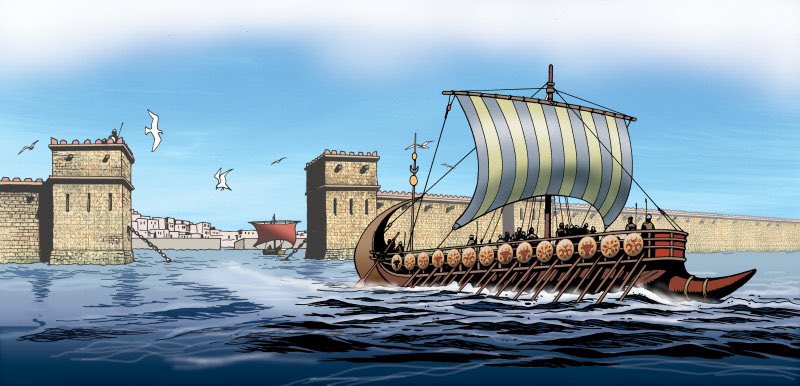
The gold trade with Sub-Saharan Africa was a critical source of income for the Carthaginian Empire. Much like Pytheas’s voyage, the Carthaginians wished to strengthen this trade route by voyaging to its source, forge connections, & cut out middlemen. 
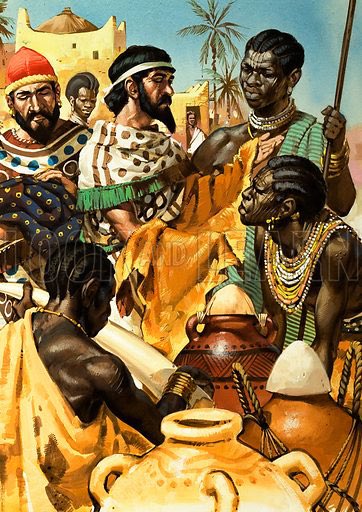
Hanno the Navigator was dispatched in the 5th c. BC to accomplish these goals & establish colonies on the way to provide safe places to refit & increase Carthaginian control of the route. Hanno sailed from Gades with 60 ships & 30,000 people. 
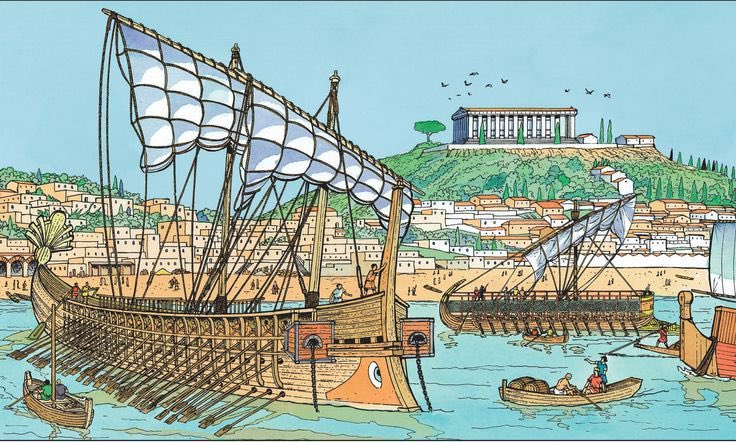
Hanno established seven cities on the Moroccan coast, the furthest at Ras Nouadhibou in Mauritania. Hanno initiated friendly relations with locals, some served as guides for parts of the journey. Hanno encountered both “Libyans” (Berbers), and “Ethiopians” (Black Africans). 
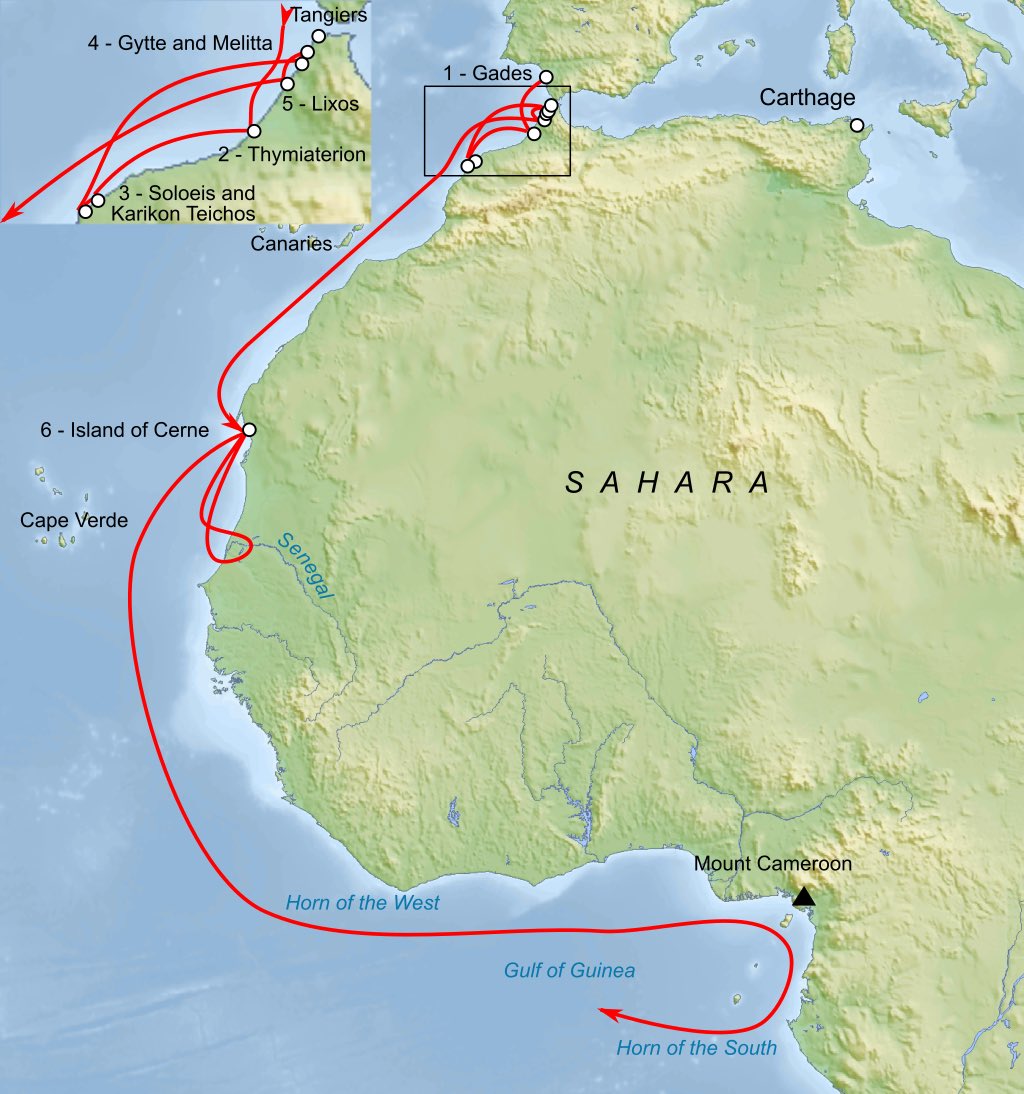
Some scholars believe Hanno made it as far as Mount Cameroon where his expedition witnessed a volcanic eruption. The men sailed on from this apocalyptic scene & captured some of the strange creatures they encountered in the dark jungles before turning back for want of supplies. 
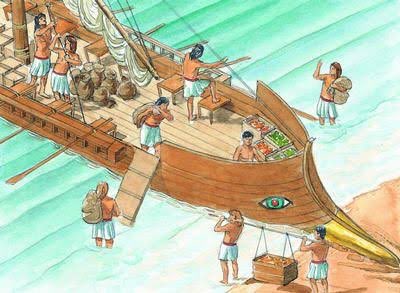
The locals called the “hairy people” “gorillai.” 3 females were taken but were so ferocious the Carthaginians killed them & had their skins displayed in the temple of Tanit/Astarte in Carthage. According to Pliny the Elder these skins survived until Rome razed the city in 146 BC. 
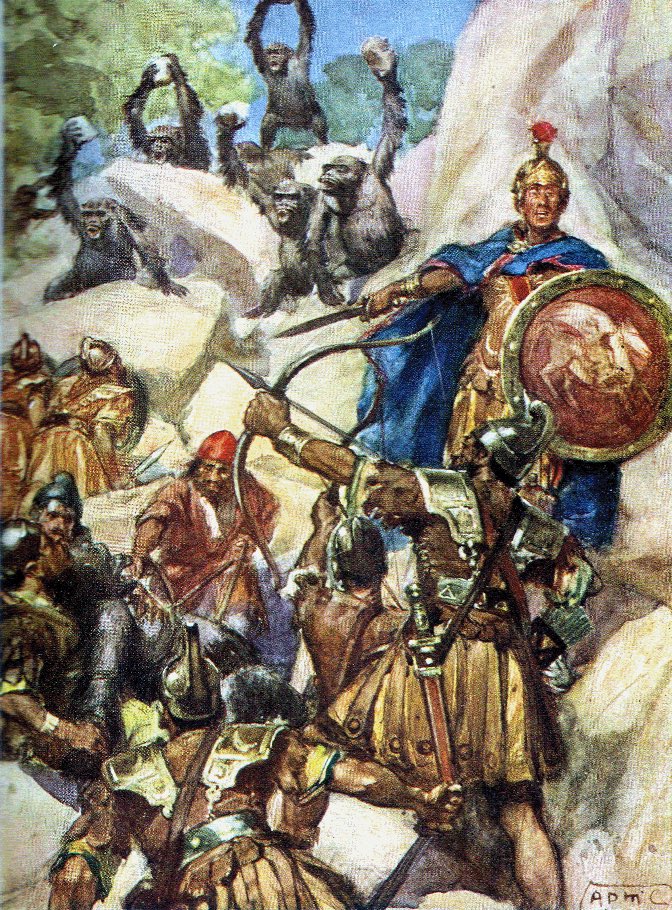
The identity of these “Gorillai” is unknown but believed to be Gorillas (who are named for this episode) or chimpanzees. These journeys, undertaken in fragile wooden craft with little more than the stars for a guide into the unknown, strain the imagination. 
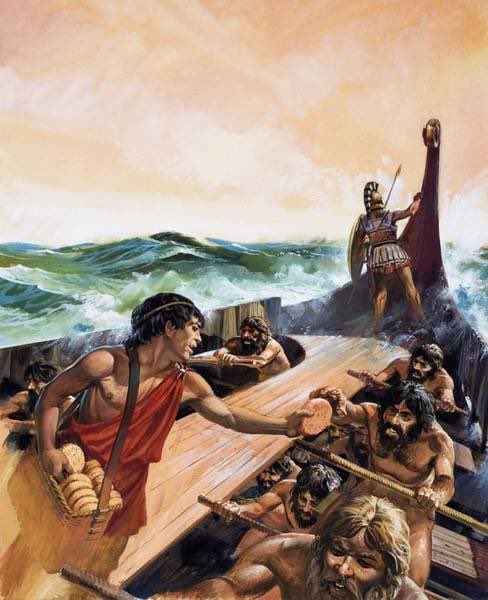
However, one was so incredible even the ancients doubted it, inadvertently supporting its truthfulness. Pharaoh Necho II sponsored a voyage in ~600 BC to circumnavigate Africa. Egypt was working on a canal to connect the Nile & Red Sea & strengthen connections with Punt/Ethiopia. 
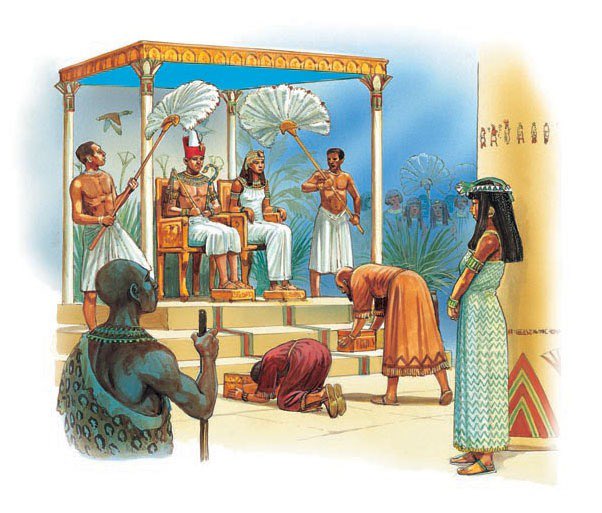
The only evidence for this voyage is a short summary in Herodotus. Herodotus related that the Phoenicians, in service of Necho, spent three years rounding the continent. An astounding feat that would not be emulated until Vasco de Gama sailed around Africa in 1493 AD. 
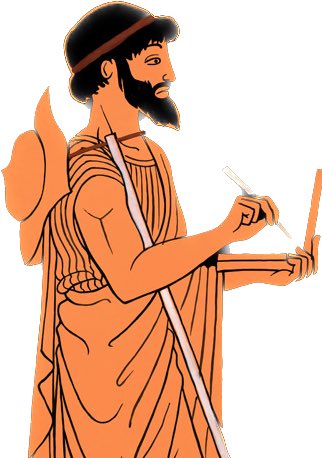
Herodotus doubts this story, saying the Phoenicians claimed the Sun was at their right as they sailed south. This seemed ridiculous to Herodotus but supports that the voyage happened as this only occurs south of the Equator & would’ve happened to the explorers! 
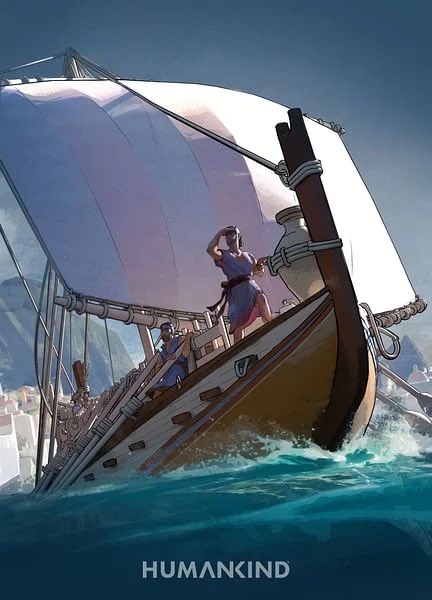
From 2008-2010 a crew of researchers crewed a replica of a Phoenician ship from the 6th c. BC and sailed it around Africa, proving it was possible and further supporting the probability that this voyage occurred, a position held by many scholars today. 
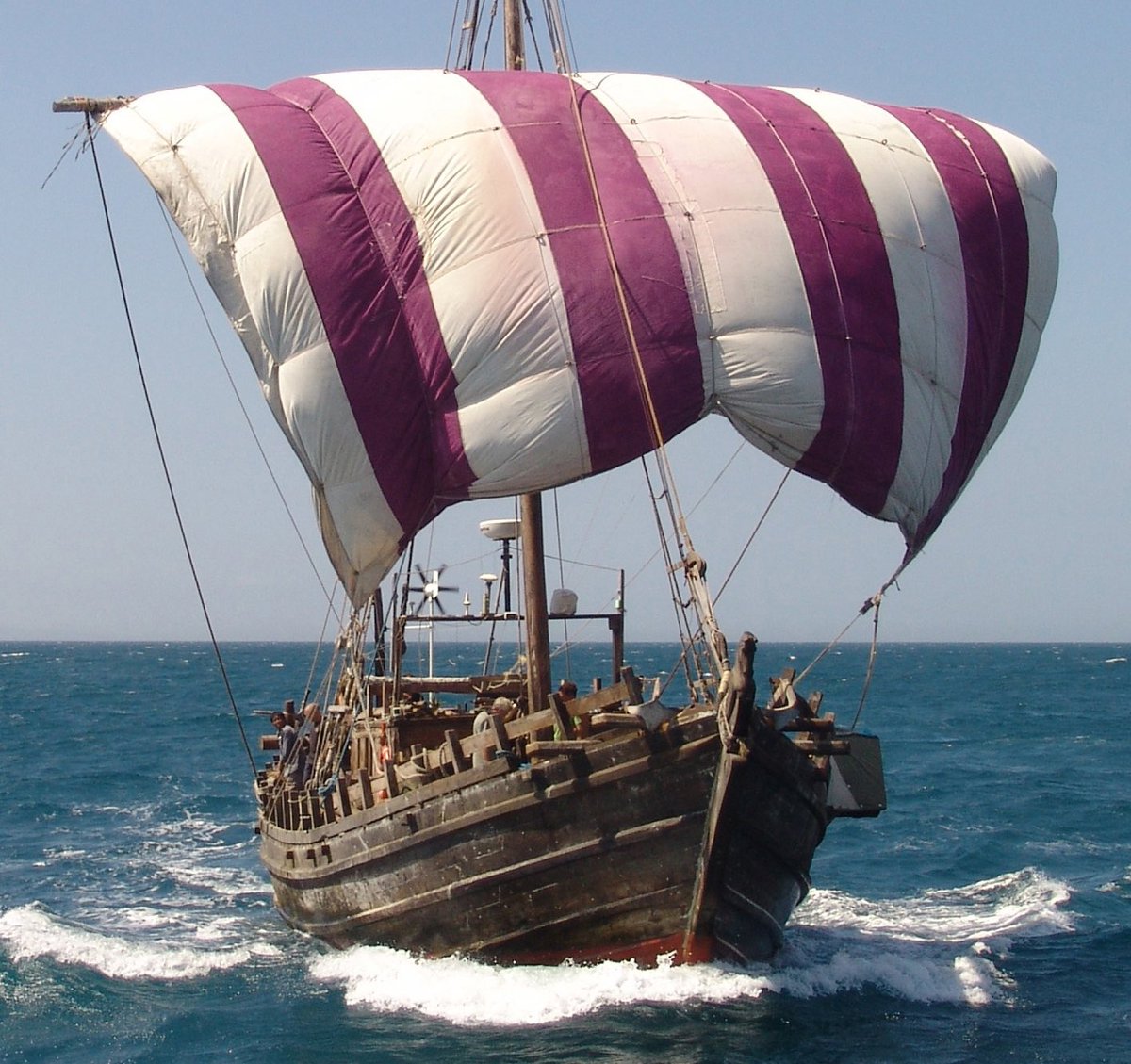
Unfortunately, the first-hand accounts of these voyages haven’t survived, hampering our ability to understand these fascinating adventures & intrepid explorers. The little evidence we have exists in brief summaries from secondary sources & adds to the mystery of these odysseys. 
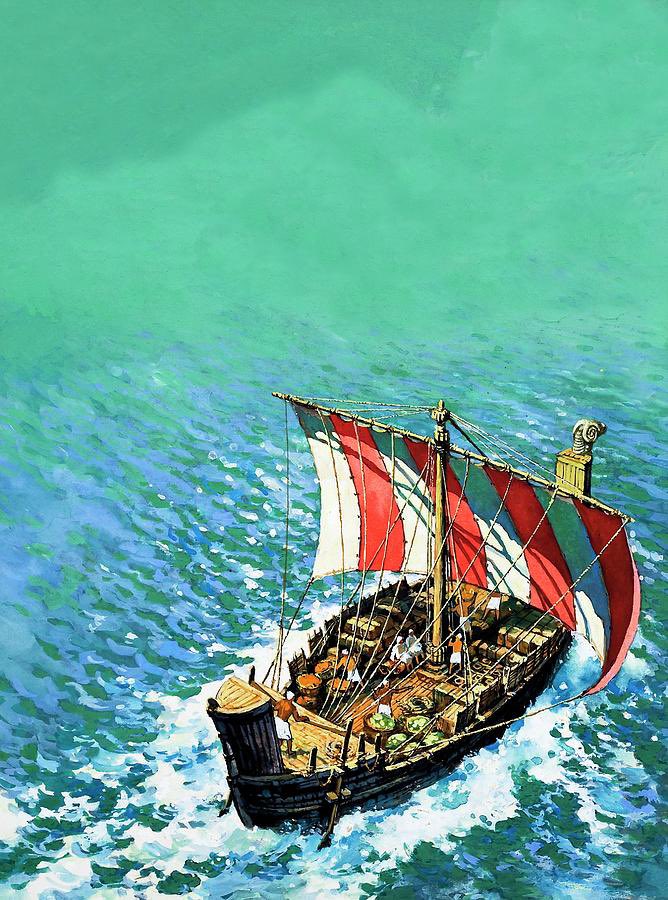
Later exploration, notably in the 15th-16th centuries, often overshadow that of the Classical World. Regrettable, as these voyages helped build a global system & even with little documentation, stir the imagination with images of brave men plunging themselves into the unknown. 
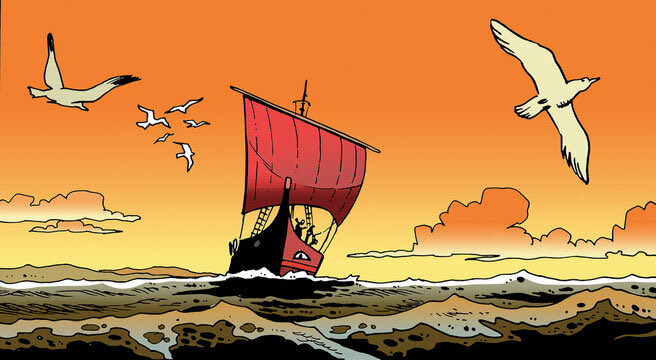
• • •
Missing some Tweet in this thread? You can try to
force a refresh











